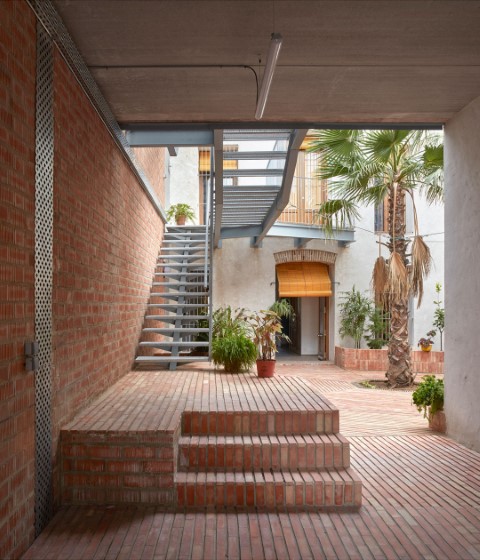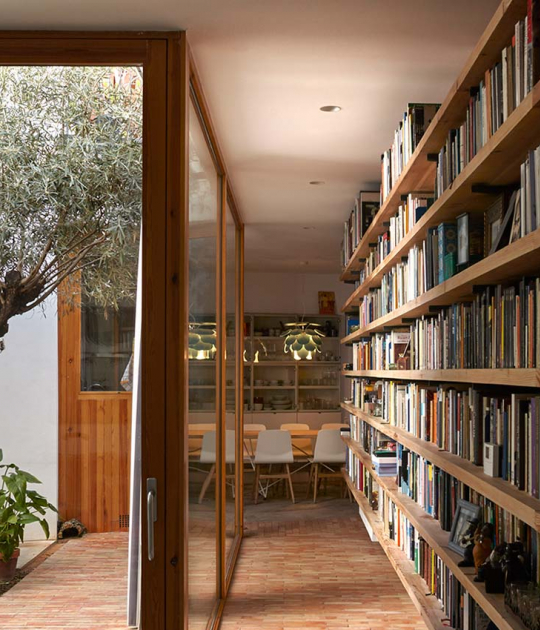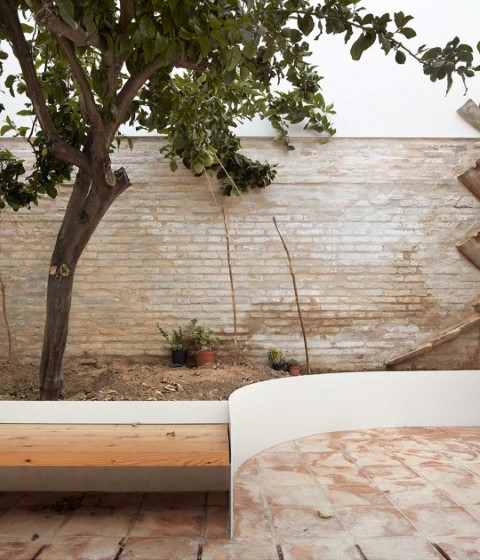The intervention carried out by Arturo Sanz is the last of the various modifications that have transformed the building throughout history, and it is undertaken after the recent paralysis of a reform work already underway by a previous owner, who managed to execute a new roof of wooden beams.
Among the main design decisions, the maintenance of the 85 cm thick load-bearing wall structure, which has been preserved since the building's foundation stands out, as well as the preservation of a slab incorporated in the 18th century.
The refurbishment gravitates over three elements: the remains of the mud wall, the white plaster cladding painted white and the stoneware that resolves the interior and exterior pavements, base, steps and the damp walls in bathrooms.
Description of project by Arturo Sanz
Renovation as a single-family house of a fragment of the "Casa del Batlle", a building founded on Islamic remains by the Order of the Templars after the Reconquest of Moncada (second half of the 13th century).
The fragment consists of a 10-metre-wide strip, two corridors of depth and an inner courtyard, with different properties superimposed between the ground floor and the first floor.
The structure is made up of load-bearing walls of 85 cm thick mud wall ("tapial"), parallel to the façade, belonging to the foundational period of the building, among which we must highlight the wall falling back to the courtyard with remains of arches of ashlar masonry. The forging of the first bay of wooden beams of large section and brick vault as beam filling (tradicional technique "revoltón") belongs to an intervention of the eighteenth century. Subsequently, the central tapial wall was partially replaced by a line of pillars displaced 1 metre towards the façade, giving rise to a duplicated and confused structure that has been maintained to the present day.
The rehabilitation was undertaken when the building had already begun and paralysed some reform works carried out by the previous owner, among which we must highlight the implementation of a new roof of wooden beams, 45º ribbon and piece of clay.
The main project decisions of the refurbishment are:
- Structural reinforcement in the central part of the building with metal profiles to ensure the precarious stability of this area.
- Leveling of the ground floor land level with the creation of a space of transition street-house to an intermediate height.
- Maintenance of the original tapials and the 18th century slab.
- Design of the interior layout on both floors as a succession of related spaces that revolve around the central structural pilasters.
- Use of as few materials as possible. The entire intervention gravitates over three elements: the remains of the tapial, the white plaster cladding painted white and the stoneware that resolves the interior and exterior pavements, base, steps and the damp walls in bathrooms.
The ceramic piece used is a natural extruded stoneware tile of 27x6.5x1.3 cm. dimensions and reddish colour complemented by a special step piece of the same characteristics, manufactured by Cerámicas Calaf S.A. (Folquer to Jorba road km. 38, Calaf, Barcelona).































































